In the ancient lands of Nemea, where myths and vineyards seem to blend together, I stumbled upon the Agiorgitiko grape—the one that gives us those deep red wines locals proudly call the “Blood of Hercules.” Walking these sun-soaked Greek hillsides, I couldn’t help but picture the legendary hero himself, maybe raising a cup of this wine after defeating the Nemean lion.
Nemea’s winemaking history stretches back thousands of years. It’s actually Greece’s largest wine-producing region and the birthplace of one of its most distinctive native grapes.
The Agiorgitiko grape absolutely thrives in this corner of the Peloponnese. It produces wines with intense color and flavors that somehow manage to capture the soul of Greek wine. When I visited Asprokambos and other little villages scattered across the region, I tasted everything from young, juicy reds to older, more sophisticated bottles.

Every glass I tried felt like a different chapter of the same ancient story.
As I wandered through Nemea’s vineyards, I started to understand why this place matters so much in both Greek mythology and modern winemaking. The Mediterranean climate, unique soil composition, and old-school techniques all come together to create bottles worthy of legends.
During harvest, music and laughter fill the air. It’s easy to feel a connection to the generations of Greeks who have worked these slopes since before Hercules became a legend.
Nemea: A Legendary Land Steeped in Myth and Wine
Nemea has this way of grabbing your attention with its mix of ancient stories and really impressive winemaking. When I arrived in the northeastern Peloponnese, I quickly saw how closely its legendary past and present-day vineyards are linked.
The Ancient Story of Hercules and the Nemean Lion
Walking around Nemea, I felt echoes of its mythical past everywhere. This is the spot where Hercules tackled his first labor—defeating the terrifying Nemean lion.
The lion had this golden fur that no weapon could pierce. Hercules outsmarted the beast and strangled it with his bare hands inside its cave.
Afterward, legend has it he celebrated with local wine. That link between victory and wine still feels alive here.
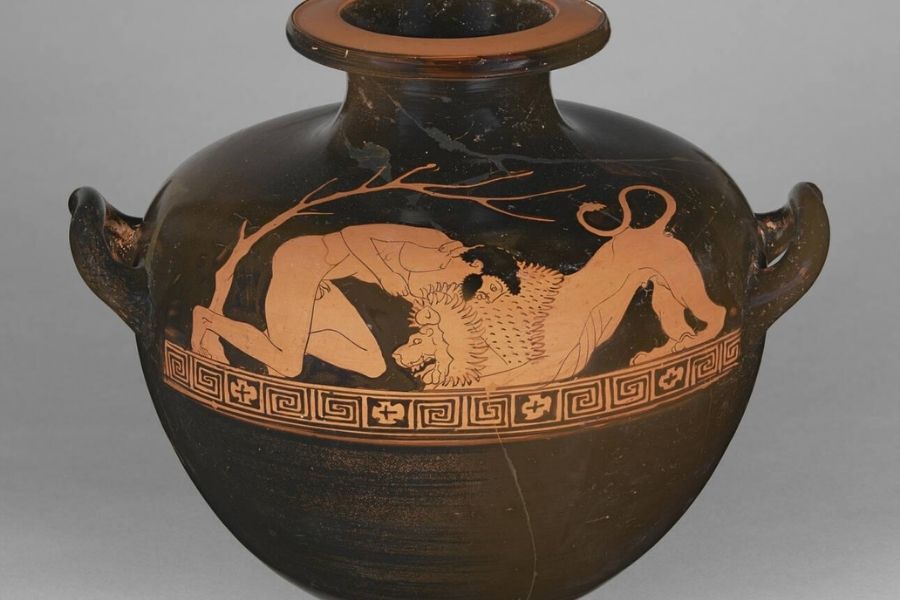
Agiorgitiko, the region’s star grape, turns into a deep ruby-red wine that locals still call “the blood of Hercules.” That mythological tie makes each glass feel like a sip from an ancient story.
Ancient Nemea: From Sanctuary to Vineyards
The archaeological site of Ancient Nemea shows this place is about more than just myths. I spent hours exploring the Temple of Zeus, built back in the 4th century BCE, and wandered through the old stadium where the Nemean Games happened.
These games honored Zeus and were almost as big as the Olympics. Athletes from all over Greece came to compete, and winners got crowns of wild celery.
Wine has been part of Nemea’s story for thousands of years. Archaeologists have found evidence of vine cultivation going back 3,500 years. The region’s climate—hot days, cool nights—creates perfect conditions for Agiorgitiko grapes.
Now, Nemea stands as Greece’s largest wine appellation. Walking through the vineyards, I felt this strange connection to both ancient athletes and Hercules himself. We all experienced the same land, just in different eras.
Agiorgitiko Wine: The Crimson Soul of Nemea
Nemea’s famous red wines tell a story that’s as bold as their color, tied to myth and the region’s culture. Agiorgitiko, often called the “Blood of Hercules,” is probably Greece’s most celebrated red grape, and it really captures the spirit of this historic land.
Discovering the Agiorgitiko Grape
As I strolled through Nemea’s sunlit vineyards, I couldn’t help but admire the Agiorgitiko vines stretching across the hills. This grape is native to Greece and thrives in Nemea’s particular climate and soil.
The name itself is a bit of a mystery. Some say it means “St. George’s grape,” while others link it straight to Hercules and his legendary battle. There’s even a story that the lion’s blood from Hercules’ first labor gave birth to these crimson wines.
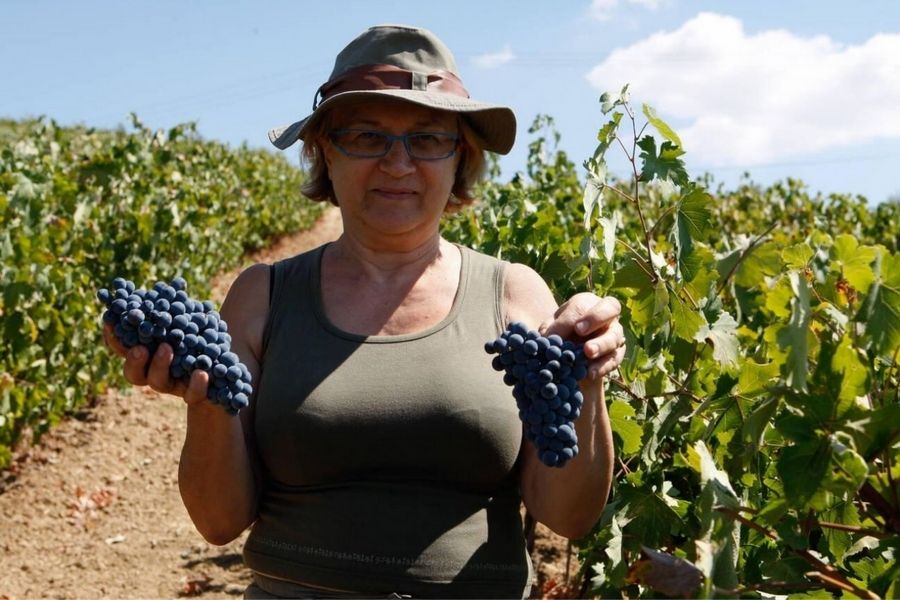
Agiorgitiko now makes up about 75% of all vineyard plantings in Nemea. It grows best at higher elevations—around 650 to 900 meters—where the cooler air helps preserve its acidity and lovely aromas.
Signature Flavors and Styles
I’ve tasted a lot of Agiorgitiko, and honestly, its versatility is what keeps me coming back. Young wines show off a bright ruby color with hints of purple.
The flavors usually feature:
- Primary notes: Black cherry, plum, strawberry
- Secondary notes: Spice, cinnamon, nutmeg
- Aging potential: Leather and dried fruit develop over time
Agiorgitiko can be fresh and fruity or serious and age-worthy. The lighter styles are great for summer, while the oak-aged versions grow more complex as they sit.
What I love most is the balance—these wines offer plenty of fruit, gentle tannins, and moderate acidity. They’re super food-friendly and easy for anyone to enjoy, even if you’re new to Greek wine.
Wine Traditions Passed Through Generations
When I visited local wineries, I saw how winemaking here is a family affair. Many winemakers proudly showed me the methods their grandparents used.
They still do a lot by hand—careful picking, gentle pressing. Sure, modern equipment is common now, but the respect for the land and the grapes never goes away.
Annual harvest festivals remain a big deal. I’ve joined families for big meals after the grape picking, where Agiorgitiko is poured freely and everyone celebrates.
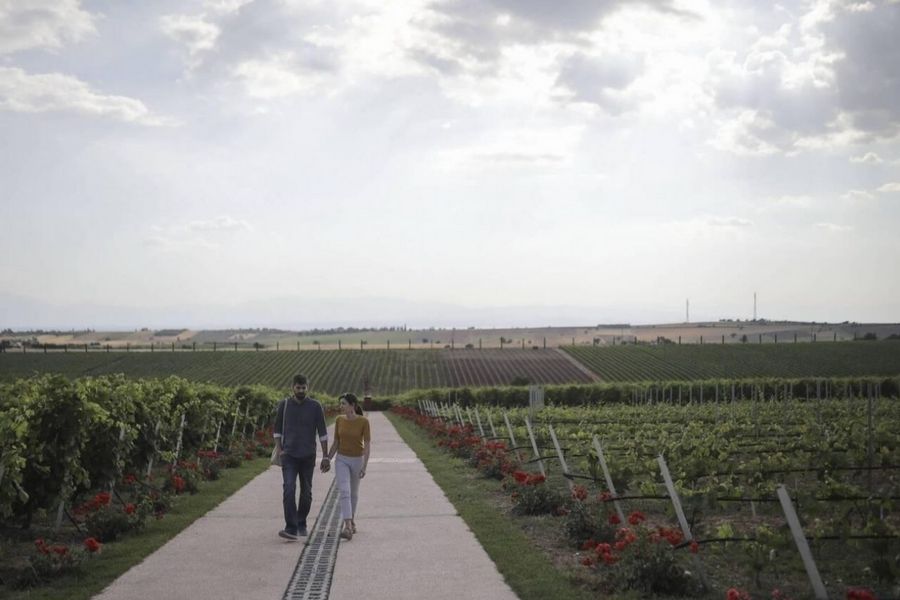
Wine here isn’t just something to drink—it’s part of the local identity. Artists paint the vineyards, musicians write songs about the harvest, and local dishes are designed to pair perfectly with these wines.
Exploring Nemea’s Vineyards and Wine Routes
Nemea’s wine country offers a journey through both ancient traditions and modern excellence. Vineyards roll across sunlit hills, creating a perfect home for the Agiorgitiko grape.
Must-Visit Vineyards and Family Estates
The family-run estates in Nemea really are the heart of the region. Domaine Skouras, for example, impressed me with its mix of creativity and tradition. Their Agiorgitiko wines are elegant, and the tours explain how this grape gets its deep color and soft tannins.
Gaia Wines stands out too, with a modern facility set among old vineyards. The blend of ancient growing and high-tech production really tells the story of how Nemea has changed.
Papaioannou Estate is another must-visit. It’s one of the oldest organic vineyards around, and you can taste the family’s dedication to quality in every glass.
Wine Tasting Experiences with Local Winemakers
Meeting Nemea’s winemakers adds so much to the tasting experience. Many offer tours where you can sample wines straight from the barrel and hear the stories behind each vintage.
I loved how tastings here often include local snacks—just simple things that fit perfectly with Agiorgitiko’s cherry and spice notes. Winemakers like to show how the same grape can make everything from bright, fruity wines to deep, oak-aged bottles.
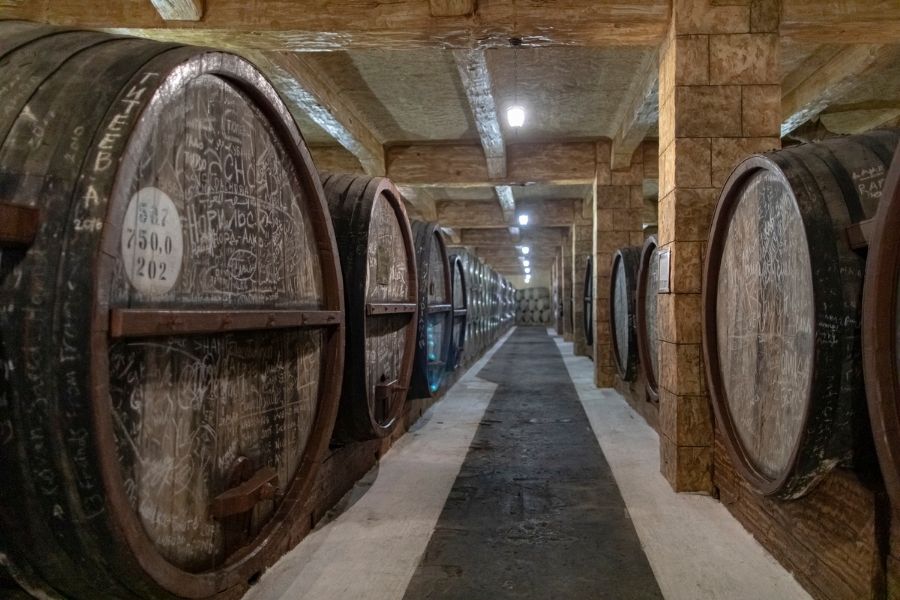
During harvest season (August-September), some estates let visitors join in the grape picking or even try the old-fashioned foot-stomping. These hands-on moments really connect you to Nemea’s winemaking heritage.
Travelling the Nemean Wine Routes
The official wine routes in Nemea make exploring easy. I suggest starting at the Wine Roads of Nemea welcome center, where you can grab maps and check out what’s happening that season.
The Northern Route took me through villages like Ancient Nemea and Asprokampos. The views are stunning, and you can find little tavernas serving local food. Many wineries along the way welcome visitors for impromptu tastings.
The Southern Route has bigger estates with scheduled tours and tasting rooms. Booking ahead is smart, especially in summer when things get busy.
Renting a car gives you the most freedom, but if you want to relax and enjoy the wine, organized tours are a great option.
Immersing in Nemean Culture and Local Life
Nemea offers more than just great wine—it invites you into a lively culture rooted in both ancient traditions and modern winemaking.
Festivals and Wine Celebrations
Walking through Nemea during festival time is a treat for the senses. The Great Nemean Games happen every four years, reviving ancient athletic traditions with competitions and performances that make you feel like you’ve stepped back in time.
Last year, I got lucky and caught the Nemean Wine Festival. Local winemakers poured their Agiorgitiko vintages under the olive trees, and everyone danced to traditional music in colorful dress.

There are also smaller harvest celebrations throughout fall. Families gather to pick grapes, and visitors are welcome to join in the grape stomping—a messy, hilarious tradition that gives you a real taste of local life.
Tasting Local Cuisine with Agiorgitiko Pairings
Agiorgitiko’s rich, fruity flavors work perfectly with Nemean cuisine. At local tavernas, I’ve had lamb slow-cooked with mountain herbs—the bold flavors match the wine beautifully.
Typical mezze platters include:
- Feta with local honey
- Oregano-cured olives
- Spicy sausages from local pork
- Fresh vegetables from nearby farms
Village bakeries serve warm, crusty bread, perfect for dipping in olive oil pressed just down the road. The regional specialty, kleftiko (slow-roasted lamb), is a classic pairing with aged Agiorgitiko.
Something that surprised me? Restaurants often change their menus with the seasons, matching dishes to the latest wines. That kind of thoughtful pairing shows how deeply wine is woven into daily life here.
Beyond the Vine: Scenic Adventures and Neighboring Destinations
Nemea’s wineries are the main draw, but the surrounding area offers plenty of adventures to round out your trip. The history and scenery here are just as memorable as the wine.
Sailing from Nemea: Island Escapes to Hydra
A short drive from Nemea’s vineyards brings you to the Saronic Gulf, where boats regularly head for Hydra. This island completely charmed me—no cars, just stone mansions climbing the hills.
The ferry from the mainland takes about an hour and a half. Once you arrive, wander the narrow lanes lined with bougainvillea or grab a seat at a waterfront café to watch the world go by.
Hydra feels like a step back in time. Donkeys still do most of the heavy lifting, and the whole island has a peaceful, old-world vibe.
Hydra highlights:
- Swimming in clear coves
- Exploring historic captain’s homes
- Fresh seafood at harbor restaurants
- Hiking up mountain paths for sweeping views
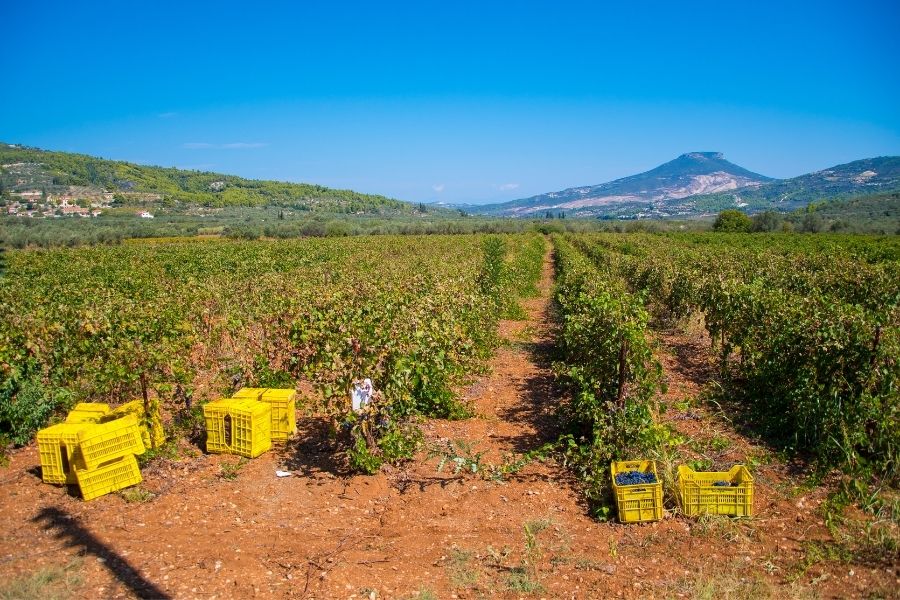
On the Water: Activities in the Nearby Peloponnesian Coast
The Peloponnesian coast offers a refreshing break from vineyard tours. I spent a day kayaking around hidden coves—places you just can’t reach by road—and paddled through bright turquoise water, taking in the rugged coastline.
Sailing trips leave from nearby ports like Nafplio. You can book a half-day outing or go for a longer adventure along the coast. Most include stops for swimming and snorkeling in quiet spots.
If you’re after something more laid-back, beach hopping is a great way to unwind. Tolo Beach and Karathona have golden sand and gentle water, perfect for families.
Water lovers have plenty of options here:
- Windsurfing in Nafplio Bay
- Stand-up paddleboarding on calm mornings
- Fishing with local guides
- Scuba diving to check out underwater ruins
Exploring the Archaeological Site of Ancient Nemea
When you wander through the ruins of Ancient Nemea, you feel that link to the myth of Hercules and the Nemean Lion right away.
The Temple of Zeus grabs your attention first. Massive columns stretch up toward the mountains, and honestly, it’s a little breathtaking.
I found the stadium especially fascinating. They recently dug it up, and you can actually walk—or run—on the same clay track where athletes raced over two thousand years ago.
I took off my shoes and gave it a try. For a moment, I almost felt like I’d traveled back in time.
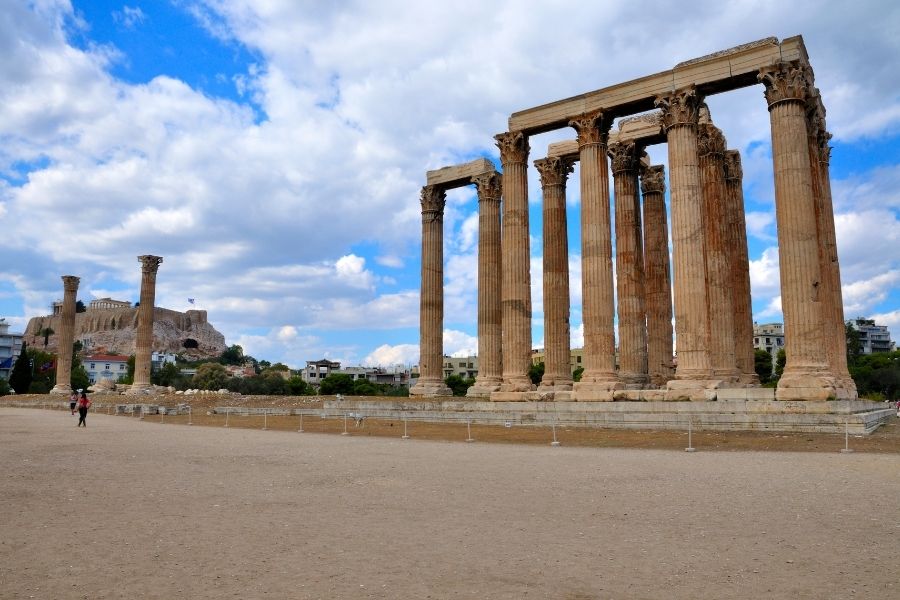
Don’t skip the archaeological museum. It’s packed with artifacts from the site, and the bronze statues and pottery really let you imagine what daily life looked like back then.
You’ll find the site just a short drive from several wineries. You can easily squeeze both history and wine tasting into the same day.
If you go, try getting there early before things heat up. Later, you can cool off at a nearby winery with a glass in hand.

